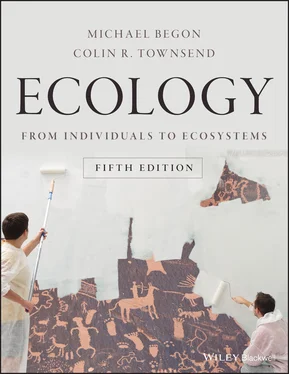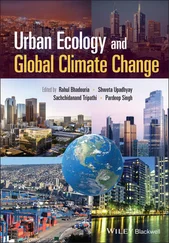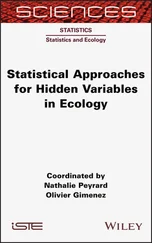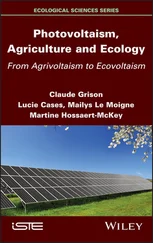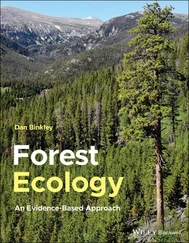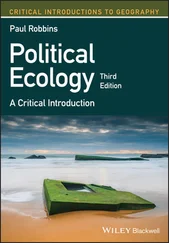APPLICATION 2.7 Coral reefs and mangrove forests may ameliorate the impact of tsunamis
ecosystem services
Ecosystems often provide valuable ecosystem services (see Section 15.4.1) that people use and enjoy. Provisioning services include wild meat and berries, medicinal herbs, fibre products, fuel and drinking water; cultural services include aesthetic fulfillment, education and recreation; regulating services include the ecosystem’s capacity to ameliorate the effects of pollutants or to moderate disasters (such as tsunamis); finally, supporting services , such as primary production and nutrient cycling, underlie all the others (Townsend, 2008).
The devastating tsunamis of 2004 and 2011, caused by earthquakes off Sumatra (9.3 on the Richter scale) and north‐eastern Japan (9.0), took huge tolls in human lives and livelihoods and, hardly surprisingly, also greatly changed near‐shore and coastal ecosystems, both aquatic and terrestrial (e.g. Urabe et al ., 2013). More surprising, perhaps, has been the finding that intact coral reefs can absorb some of the wave’s power (Kunkel et al ., 2006). According to the American Geophysical Union, illegal coral mining off the south‐west coast of Sri Lanka allowed far more destruction from the 2004 Pacific‐wide tsunami than occurred in nearby areas where coral reefs were intact. It seems that exploitation of a provisioning service (coral crushed to create road surface) resulted in loss of a regulating service . Moreover, muddy shores with intact mangrove forest also seem to have moderated the devastation caused by the 2004 tsunami, both by reducing human mortality inland and by preventing the inland intrusion of saltwater that, where mangroves had been removed, ruined rice and groundnut crops (Kathiresan & Rajendran, 2005). The conservation and restoration of coral reefs and mangrove forests should help protect against these natural catastrophes.
2.8 Environmental pollution
A number of environmental conditions that are, regrettably, becoming increasingly important are due to the accumulation of toxic byproducts of human activities. Sulphur dioxide emitted from power stations, and metals like copper, zinc and lead, dumped around mines or deposited around refineries, are just some of the pollutants that limit distributions, especially of plants. Many such pollutants are present naturally but at low concentrations, and some are indeed essential nutrients for plants. But in polluted areas their concentrations can rise to lethal levels. The loss of species is often the first indication that pollution has occurred, and changes in the species richness of a river, lake or area of land provide bioassays of the extent of their pollution.
rare tolerators
Yet it is rare to find even the most inhospitable polluted areas entirely devoid of species; there are usually at least a few individuals of a few species that can tolerate the conditions. Even natural populations from unpolluted areas often contain a low frequency of individuals that tolerate the pollutant; this is part of the genetic variability present in natural populations. Such individuals may be the only ones to survive or colonise as pollutant levels rise. They may then become the founders of a tolerant population to which they have passed on their ‘tolerance’ genes, and, because they are the descendants of just a few founders, such populations may exhibit notably low genetic diversity overall ( Figure 2.24). Thus, in very simple terms, a pollutant has a two‐fold effect. When it is newly arisen or is at extremely high concentrations, there will be few individuals of any species present (the exceptions being naturally tolerant variants or their immediate descendants). Subsequently, however, the polluted area is likely to support a much higher density of individuals, but these will be representatives of a much smaller range of species than would be present in the absence of the pollutant. Such novel, species‐poor communities are now an established part of human environments (Bradshaw, 1987).
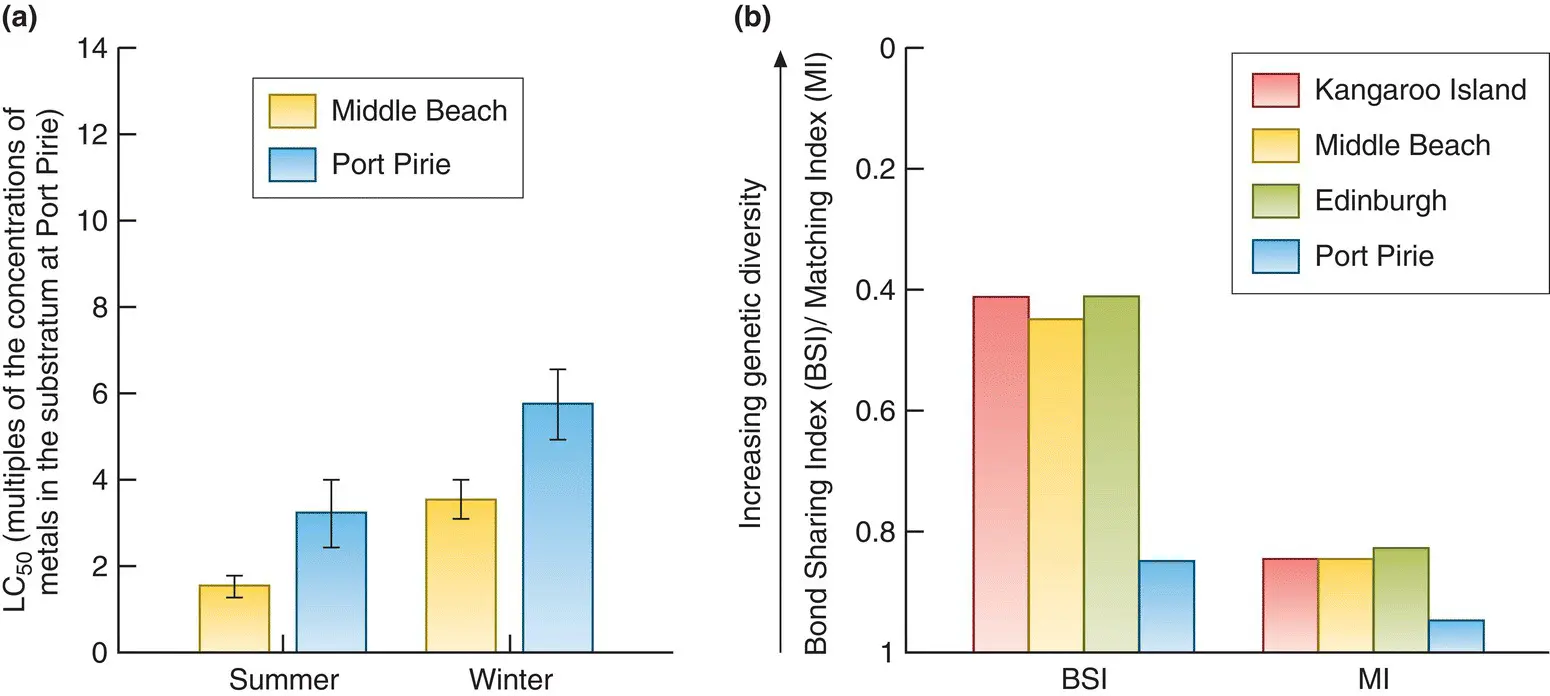
Figure 2.24 Individuals of Platynympha longicaudata in a polluted site are more tolerant of pollution and have lower genetic diversity.(a) Tolerance of this marine isopod around Port Pirie, South Australia (the largest lead smelting operation in the world), was significantly higher ( P < 0.05) than for animals from a control (unpolluted) site, as measured by the concentration in food of a combination of metals (lead, copper, cadmium, zinc and manganese) required to kill 50% of the population (LC 50). (b) Genetic diversity at Port Pirie was significantly lower than at three unpolluted sites, as measured by two indices of diversity based on RAPD (random amplified polymorphic DNA).
Source : After Ross et al . (2002).
APPLICATION 2.8 Bioremediation and phytomining
Species may differ greatly in their ability to tolerate pollutants. Some plants (often assisted by microbial symbionts in their rhizosphere) are hyperaccumulators of heavy metals – lead, cadmium and so on – with an ability not only to tolerate but also to accumulate much higher concentrations than the norm. As a result, species such as Solanum nigrum have an important role to play in bioremediation (Sun et al ., 2017), removing pollutants from the soil so that eventually other, less tolerant plants can grow there too.
Some may even be used for phytomining , where hyperaccumulator plants are used to accumulate a metal of interest from metal‐rich soils and transport them to the shoots, followed by harvesting of the shoots as a bio‐ore (Thijs et al ., 2017). Thus, Alyssum bertolonii can accumulate in its aerial parts 7000–12 000 μg g –1dry weight of nickel, while Arabidopsis halleri and S. nigrum can accumulate and tolerate similarly high concentrations of zinc and cadmium, respectively.
Organisms with bioremediation potential also include fungi and bacteria (de Alencar et al ., 2017), and remediation can be directed not only at heavy metals but also at many other pollutants, including petroleum‐ and explosives‐contaminated soil and polycyclic aromatic hydrocarbons.
Pollution can, of course, have its effects far from the original source. Toxic effluents from a mine or a factory may enter a watercourse and affect its flora and fauna for its whole length downstream. Effluents from large industrial complexes can pollute and change the flora and fauna of many rivers and lakes in a region and cause international disputes.
acid rain
A striking example of pollution at a distance is the creation of ‘acid rain’ – atmospheric deposition of acidic constituents (particularly sulphuric and nitric acid) that reach the ground as rain, snow, particulates, gases and vapour. Acid rain results predominantly from emissions of sulphur dioxide and oxides of nitrogen ( Figure 2.25a, b) from the burning of fossil fuels to generate electricity, transport and industry, and increased dramatically after the Industrial Revolution in Europe and North America. Profound ecological effects, often across national boundaries at considerable distances from the polluting source, have included damage to forests and soil communities and acidification of rivers and lakes, with associated loss of biodiversity and recreational activities such as fishing.

Figure 2.25 Acid emissions have been decreasing in Europe since 1970 while they continued to increase in China.Annual emissions of (a) sulphur dioxide and (b) nitrogen dioxide in Europe from 1880 to 2005 and of (c) ammonia and oxides of nitrogen (NO x) in China from 1980 to 2010.
Читать дальше
